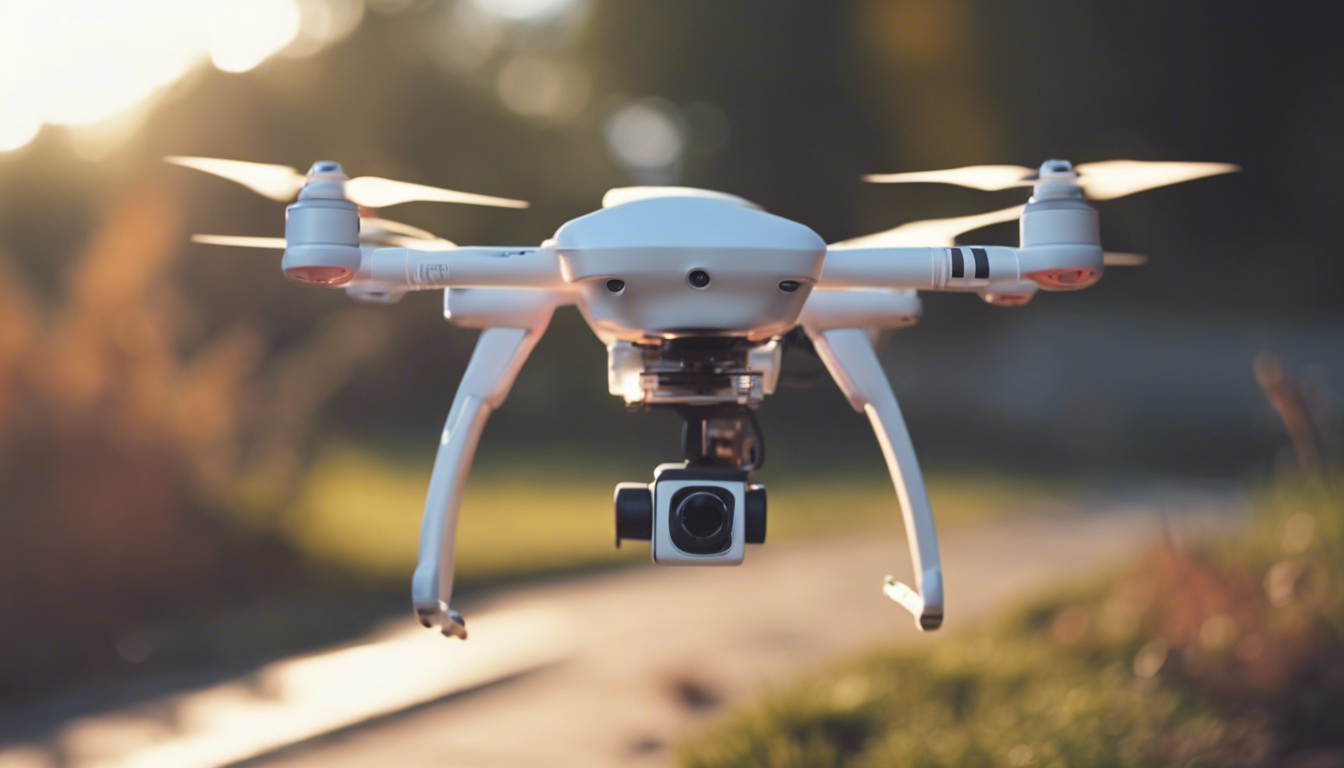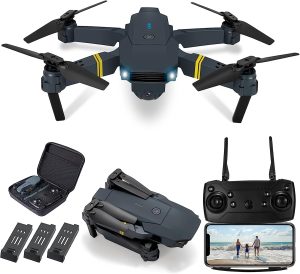
Evolution of Autonomous Flight Technology
Once upon a time, the notion of autonomous flying machines was pure science fiction, save for a simple frisbee soaring through the air, guided by the will of the wind. Fast forward to now and drones are everywhere, zipping through skies with hardly a human hand guiding their path. But how did we get here? The evolution of autonomous flight technology is like something out of a tech fairytale, only it is real and far more intriguing.
Let’s rewind a bit. It all started with remote-controlled aircraft, which required constant input from an operator on the ground. These rudimentary models were once cutting-edge, but in retrospect, they’re like comparing a flip phone to a smartphone. The leap to autonomy began with baby steps: simple sensors and basic autopilot systems that could maintain altitude and direction, kind of like cruise control for your car.
The real game-changer came with the fusion of GPS technology and advanced computing. Suddenly, drones didn’t just know up from down; they knew their position relative to the whole world. Combine that with mind-boggling algorithms, and these machines began to chart courses through the sky as easily as you or I stroll to the fridge for a midnight snack.
But it’s not just about going from point A to B. Today’s drones are like flying geniuses. They use cameras and sensors to ‘see’ the world in 3D, reacting to obstacles with the agility of a cat. This type of situational awareness was once in the realm of fighter pilots and is now embedded in consumer tech. Imagine drones that can weave through forests, dodge kites, and still track a subject for that perfect aerial shot – all without breaking a sweat.
It is not all roses, though. Autonomous flight tech still faces its version of growing pains. Battery life is like an Achilles’ heel – these drones can only play for so long before needing a nap to recharge. And let’s not even get started on the tangles of air traffic management when hundreds of drones buzz into commercial airspace.
Despite these challenges, autonomous flight has rocketed from humble beginnings to dizzying heights. It is not just about tech getting smaller or faster; it’s about drones acquiring the smarts to venture out on their own. So next time you see one hovering overhead, remember that it is not just flying – it is practically thinking.
Integrating AI into Drone Navigation and Decision Making
Imagine a world where drones are not just buzzing around, but are making decisions like seasoned pilots. That world is already unfurling before our eyes, thanks to the wonders of artificial intelligence (AI). Integrating AI into drone systems offers these flying whizz-kids a chance to show off their decision-making prowess, and trust me, they’re putting some humans to shame.
Let’s dive into the symphony of sensors and processors that give these drones their smarts. It starts with a baptism by AI – endowing them with the ability to learn and adapt on the fly, literally. Through advanced navigation systems coupled with machine learning, drones can now understand their environment in ways we could only have dreamt of, say, a decade ago. They’re learning the aerodynamics of cutting through the air more efficiently or how to take that picture-perfect landscape shot without any human interference.
But here’s the kicker – they’re not just following pre-programmed routes anymore. AI enables these machines to make snap judgements when dealing with unpredictable scenarios. For instance, imagine a drone delivering a parcel encounters an unexpected thunderstorm. The AI in control would quickly weigh options, much like a chess player under a timer’s pressure, to either reroute or seek shelter until the storm passes. It’s like having an onboard commander making tactical decisions on the go.
And it gets even better! Some drones are also being trained in object recognition and avoidance, allowing them to navigate crowded environments. They’ve got this uncanny ability to spot a flock of birds and reroute their flight path faster than you can say ‘Migratory pattern’. It’s like watching a high-tech ballet dancer elegantly sidestep around humans and natural obstacles – grace paired with silicon precision.
Fancy drones that film athletes are another wonder of AI integration. These clever flying cameras can lock onto a moving target and follow every twist and turn, ensuring that every moment of action is captured. This is a real game-changer for sports enthusiasts and filmmakers alike, revolutionizing the way dynamic footage is captured.
Even with all their newfound intelligence, however, drones are still learning to play nice with other aerial traffic. Efforts are being made to craft AI algorithms that will allow drones to communicate with each other and coordinate their flight patterns, effectively opening up the skies as never before. This isn’t just about avoiding mishaps; it’s about creating an airborne dance of respect and harmony.
It’s evident that integrating AI into drone technology has opened a Pandora’s box of possibilities – some mesmerizing and others downright practical. From performing search and rescue missions in treacherous terrains to capturing the ideal selfie (because why not?), AI-powered drones are rapidly becoming integral to our skies. Just think about those stories we’ll tell one day – about how these intelligent machines soared into our lives and changed our skies forever.
Addressing Ethical and Regulatory Concerns in AI Drone Deployment
In a world where drones are becoming increasingly intelligent and independent, digging into the ethical and regulatory enigmas associated with their deployment turns out to be as important as the technology itself. Imagine the skies crowded with AI-enabled drones operated by businesses, law enforcement, and hobbyists. It paints a picture that’s part art, part science fiction, and a whole lot of policy debates.
There’s a talk in the corridors of power about the need to shape guidelines that balance innovation with privacy, safety, and security concerns. Whisper the word ‘drone’ and suddenly everyone’s thinking of Big Brother or nefarious snooping. It is crucial to reassure the public that these high-flying smarties are here to enhance lives, not to peek into their backyards uninvited. Ensuring stringent data protection and privacy standards are baked into drone operations is not just good manners; it’s imperative for maintaining trust.
The dance of drones in the air also necessitates a well-choreographed regulatory framework to avoid collisions and chaos over our heads. Think of it as air traffic control gets a techy twist. Rules are being laid down about where drones can fly, how high they can go, and even when they should stay grounded (think bad weather or major public events). Compliance with these regulations can be as dry as a legal document, but it’s the bedrock for a future where drones zip around doing good, rather than causing headaches.
One must not forget the drone drama over sensitive areas. Special no-fly zones around airports and critical infrastructure are drawn up for good reason. Letting an AI-driven drone wander too close to an airplane or power plant could lead to scenarios no one wants to live through. Thus, setting up geofencing – digital barriers in the sky – becomes a safeguard protecting our most vulnerable spots from accidental or intentional incursions.
Let us swing the spotlight over to the ethical theater where autonomous drones are players on a complicated stage. Deployment of drones in military and surveillance operations stirs heated dialogues on morality and justice. How much autonomy should these machines have? Should a drone decide the outcome of high-stakes situations? These probing questions make for more than just coffee table talk. They call for deep reflection by policymakers, technologists, and society alike.
As we strive to wrap our legal and ethical codes around this buzzing advancement in technology, lively debates will shape the path of these sky rovers. Will there be complete harmony? Perhaps not instantly. But with conscientious and inclusive dialogues, we’re on our way to a world where AI-powered drones are seen not just as tools or toys, but as heralds of a new era in autonomy—one that flies high with responsibility and care.
